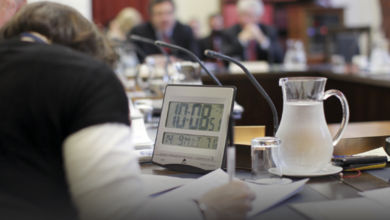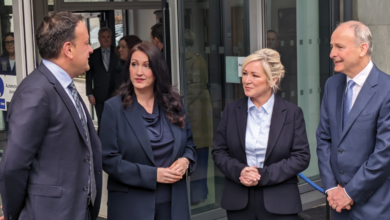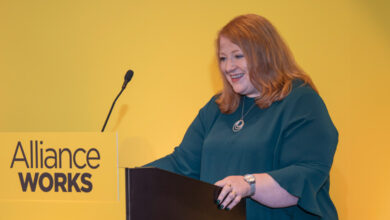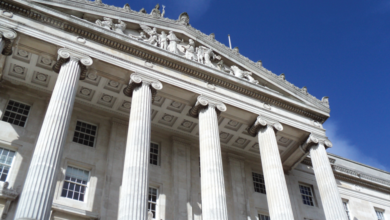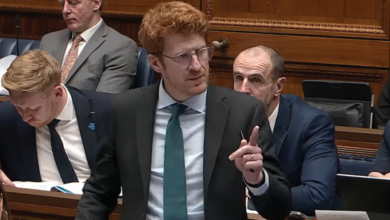Women and politics in Ireland since 1918
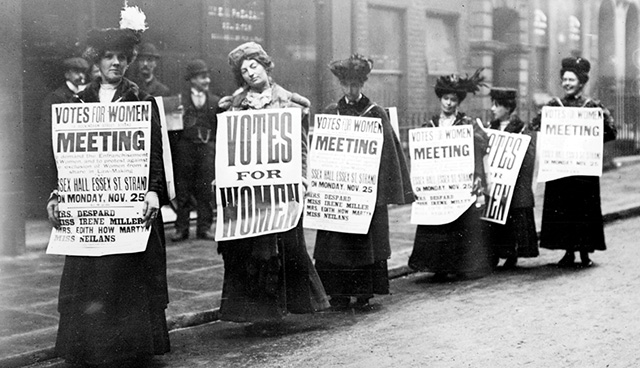
February 2018 marked the centenary of some women achieving the right to vote in parliamentary elections in Britain and Ireland. Queen’s University Belfast’s Yvonne Galligan and Marie Coleman write.
The Representation of the People Act, which became law on 6 February 1918, introduced universal male suffrage (over-21) and enfranchised women over the age of 30 subject to a minimal property qualification.
The age differential reflected the impact of male mortality during the First World War and was designed to ensure that women did not constitute a majority of the electorate. UK-wide, the act extended the right to vote from 8 million to 21 million people, bringing 8 million women onto the electoral register. In Ireland the electorate almost trebled from 700,000 to just under 2 million.
Universal suffrage (lowering the vote age for women to 21) was introduced to the Irish Free State in its 1922 constitution, but women in Great Britain and the newly created Northern Ireland had to wait until 1928 for full voting equality. As such, 2018 has an added significance in these jurisdictions as it also marks ninetieth anniversary of full universal suffrage on these islands.
Additional legislation – the Parliament (Qualification of Women) Act – passed on 21 November 1918, extended the right to stand for parliament to women aged 21 and older. In the subsequent December general election, seventeen women stood for election to the House of Commons, including two for Irish constituencies. Sinn Féin’s Winifred Carney lost heavily in the solidly working-class unionist constituency of Belfast Victoria, while Constance Markievicz’s election for Dublin City St Patrick’s marked the first election of a woman to the British House of Commons.
The Irish suffrage campaign
The eventual concession of the vote recognised the contribution of women to the war effort in Britain and followed a lengthy campaign by suffrage activists from the mid-nineteenth century. The militant suffragette campaign of Emmeline Pankhurst’s Women’s Social and Political Union has been widely celebrated in popular culture such as the 2015 film Suffragette. However, there was a significant and distinct campaign in Ireland during what is often referred to as the first wave of feminism.
Women in Ireland first became politically active on a gender-specific issue during the 1860s in a campaign to repeal a series of Contagious Diseases Acts. These allowed for the compulsory examination, incarceration and treatment of prostitutes, in institutions such as Dublin’s Westmoreland Lock Hospital, in an effort to stem the incidence of venereal disease among soldiers. In Ireland there was a particular focus on prostitutes in the vicinity of the Curragh camp and other large military barracks.
Irish women activists, including Anna Haslam and Isabella Tod, were involved in the repeal campaign and their work subsequently led to the establishment of the first suffrage societies in Ireland, by Tod in Belfast in 1872 and Haslam in Dublin in 1876. While Tod and Haslam came from a liberal-unionist background, nationalist women also became politicised in this period through organisations such as the Ladies Land League in the 1880s and Inghinidhe na hÉireann (Daughters of Ireland) in the 1900s.
The late nineteenth and early twentieth centuries also witnessed a considerable expansion of secondary and tertiary education opportunities for women in Ireland, culminating in full access to university education by 1908. Greater opportunities created greater expectations for a generation of well-educated middle-class women, such as Hanna Sheehy Skeffington, who were no longer prepared to accept their second-class political status.
“A century after suffrage, the goal of gender equality in representative politics on the island of Ireland has advanced but has not been achieved. The complexities of politics in both jurisdictions continue to challenge this goal…”
Sheehy Skeffington’s Irish Women’s Franchise League, adopted more militant methods in support of suffrage, including damage to government property such as the smashing of windows in Dublin Castle, an event re-enacted recently by her grand-daughter, Micheline Sheehy Skeffington.
The suffrage campaign coincided with a period of great political upheaval in Ireland. Suffrage crossed nationalist and unionist ideological boundaries. Women of diverse opinions on the national question, such as the unionist Lady Edith Londonderry and the republican Mary MacSwiney, could agree on the right of women to vote.
Opinions on the national question did not dictate attitudes to suffrage. Both John Redmond and Edward Carson opposed the idea on principle, but other prominent unionists such as James Craig, and nationalists like Redmond’s brother, Willie, were in favour of female enfranchisement. Labour leaders James Connolly and James Larkin were also committed suffragists. The commitment in the 1916 Easter Proclamation guaranteeing ‘equal rights and equal opportunities’ to all citizens is widely credited to Connolly, and was finally achieved in the 1922 constitution.
A false dawn
Constance Markievicz’s election, and subsequent appointment as Minister for Labour in the revolutionary first Dáil Éireann, and the extension of universal suffrage in 1922, did not usher in a golden age for women in Irish parliamentary politics. In the 100 years since women won the vote, only 114 women in total have been elected to the Dáil. In the old Northern Ireland House of Commons (1921-1972), only 11 women were returned during its 51 years of operation.
There was a 60-year gap before the Irish Government had a second female minister after Markievicz, when Charles Haughey appointed Máire Geoghegan-Quinn as Minister for the Gaeltacht in 1979. Dame Dehra Parker, who became Minister for Health and Local Government in Northern Ireland in 1949, was the only woman to hold a cabinet position in the Stormont Executive before 1972.
Various factors account for the scarcity of women in Irish parliamentary politics, especially in the early years after independence and partition. Many suffragists did not remain politically active; Hanna Sheehy-Skeffington was never a member of the Oireachtas. Women were more predominant in the anti-Treaty side after the Sinn Féin split and abstained from the Dáil after the 1922 general election. As a result more women were elected in the 1920s than took their seats, including Caitlín Brugha, Kathleen Lynn, Mary MacSwiney, Kathleen Clarke, Constance Markievicz and Kate O’Callaghan. At one stage, between 1927 and 1932, Margaret Collins-O’Driscoll, was the only female member of the Dáil. In Northern Ireland the violent context of early elections deterred the Ulster Unionist Party from running female candidates.
The women who were elected were often not staunch supporters of women’s issues. The vote for the 1929 Censorship of Publications bill, which targeted publications advocating birth control, gave Margaret Collins-O’Driscoll more satisfaction than any other vote she cast in her ten years in the Dáil.
Some women became politicians by accident. Mary Reynolds won a seat for Fine Gael in a by-election in Sligo-Leitrim in 1932 following the shooting dead of her husband, the sitting TD, Patrick Reynolds, by a disgruntled Royal Irish Constabulary pensioner during the 1932 general election. She did not speak in the Dáil until 1942. Similarly, Bridget Redmond succeeded her husband, Captain William Archer Redmond (John Redmond’s son), as a Fine Gael TD for Waterford, following his sudden death in 1932.
Increasing women’s political participation
Máire Geoghegan Quinn’s ministerial appointment ushered in an era considerably greater political participation by women in politics in the Republic. Eighty-five of the 114 women TDs have been elected since 1981. The appointment of Nuala Fennell as minister of state for women’s affairs by Garret FitzGerald in the 1980s was a recognition of the growing significance of women in political life. Since then there have also been two female presidents, six female party leaders, four female Tánaisté, but as yet no woman has been elected as Taoiseach.
The civil rights movement and the troubles engaged women more actively in politics in Northern Ireland from the late 1960s but there is a noticeable distinction between the higher levels of participation by nationalist and republican women than in unionism or loyalism, notwithstanding the election of Arlene Foster as DUP leader in 2015. This is largely explained by nationalist parties accepting the premise of gender equality and providing opportunities for women to run as candidates, especially after 1998. In contrast, women were, and by and large continue to serve, in supportive roles in unionist parties. Yet women have broken through the ranks to become party leaders, with an additional five females accompanying Arlene Foster in this role since the Good Friday/Belfast Agreement.
To this day, progress in women’s political representation on the island is slow. Only 22 per cent of members elected to Dáil Éireann in 2016 were women, compared the House of Commons (32 per cent), Welsh Assembly (42 per cent) and Scottish Parliament (35 per cent). Northern Ireland has higher female political participation, at 30 per cent of the Assembly membership, though at local government level this falls back to 25 per cent.
Political parties have long blamed the reluctance of women to come forward to stand for election as being the cause of female under-representation. However, the reality is that parties have only recently indicated that they are actually receptive to female candidates. This new openness has been accelerated in the Republic of Ireland by the 2012 Electoral Amendment (Political Funding) Act, which requires parties to select at least 30 per cent candidates of each sex, or suffer financial penalties. That quota will rise to 40 per cent from 2023.
The effect of this quota – which applied during the 2016 general election – was to increase female candidacies by 90 per cent and female TDs by 40 per cent (from 25 in 2011 to 35). This is far from the equality envisaged by suffragists but at least reflects changes in social attitudes. The public now expects to see male and female candidates on the ballot paper. In the 2016 election, only one of the 40 multi-member constituencies had an all-male candidate slate.
There are some indications that the quota law, widely debated in the Republic during its passage in 2011-12, affected the gender profile of candidates for the 2016 Northern Ireland assembly elections. The public discussion was assisted also by the civil society-led 50:50 Parliament campaign that originated in England. In the 2016 assembly election, the number of women candidates increased by 100 per cent (from 38 in 2011 to 76), while the number of women Northern Ireland Assembly members increased by 50 per cent (from 20 in 2011 to 30).
This progress was consolidated in the snap 2017 election. Women’s candidacies rose to 31 per cent, and their share of seats increased to 30 per cent, even as the number of seats in the assembly decreased from 108 to 90. Just two of the 18 multi-member constituencies presented all-male ballots to the electorate.
A century after suffrage, the goal of gender equality in representative politics on the island of Ireland has advanced but has not been achieved. The complexities of politics in both jurisdictions continue to challenge this goal, but the 2016 elections point to a defining moment, one that would have pleased the suffragists and gives hope to their sister campaigners today.
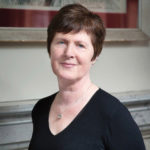
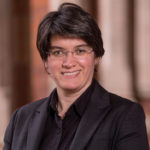
Yvonne Galligan is Professor of Comparative Politics and founding Director of the Centre for the Advancement of Women in Politics, and Marie Coleman is a Senior Lecturer in Modern Irish History, at Queen’s University Belfast.


